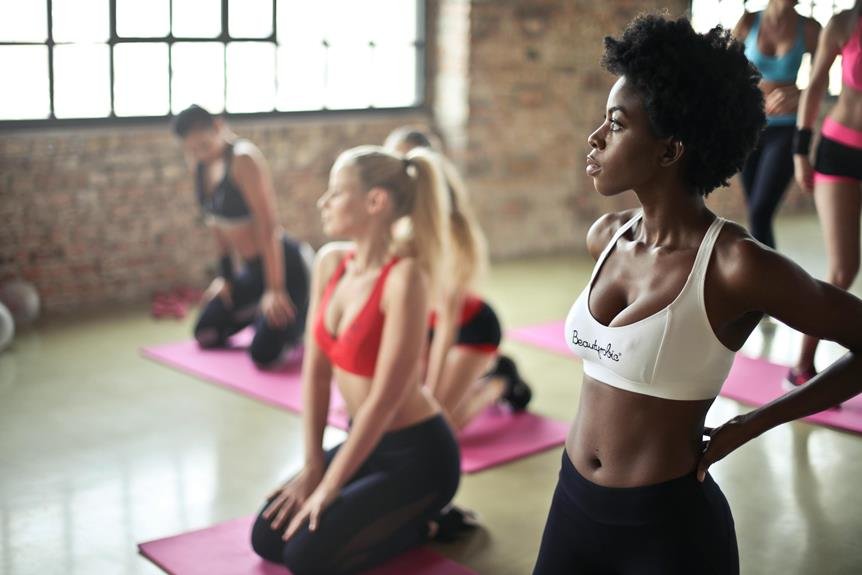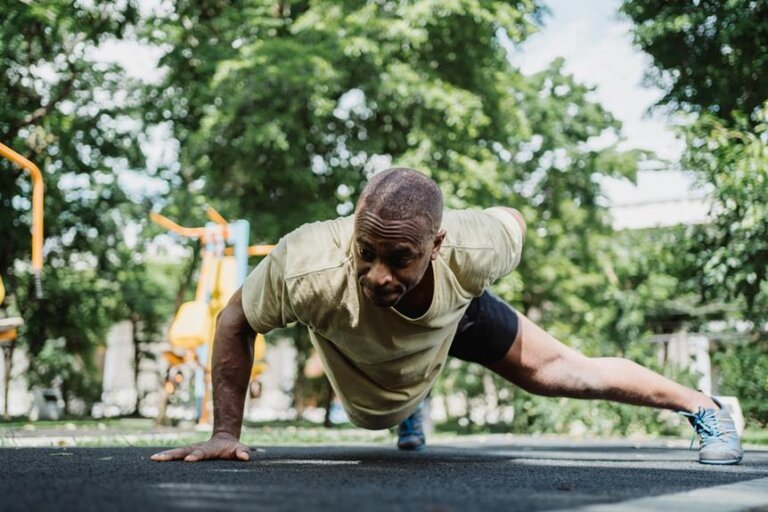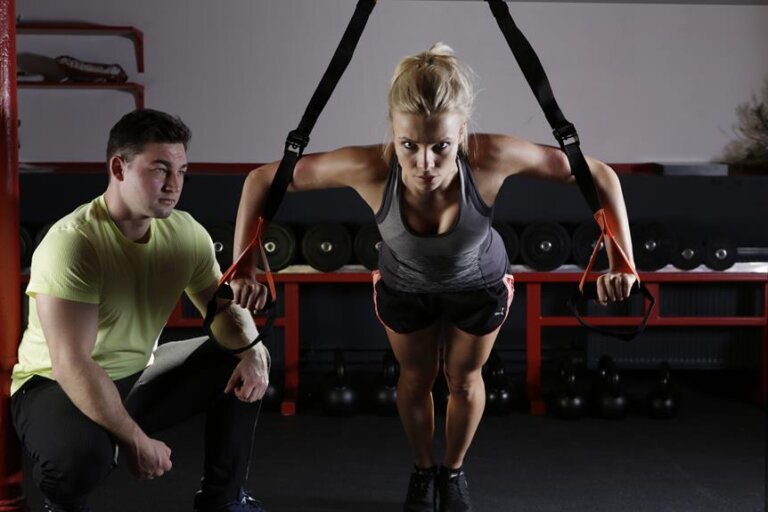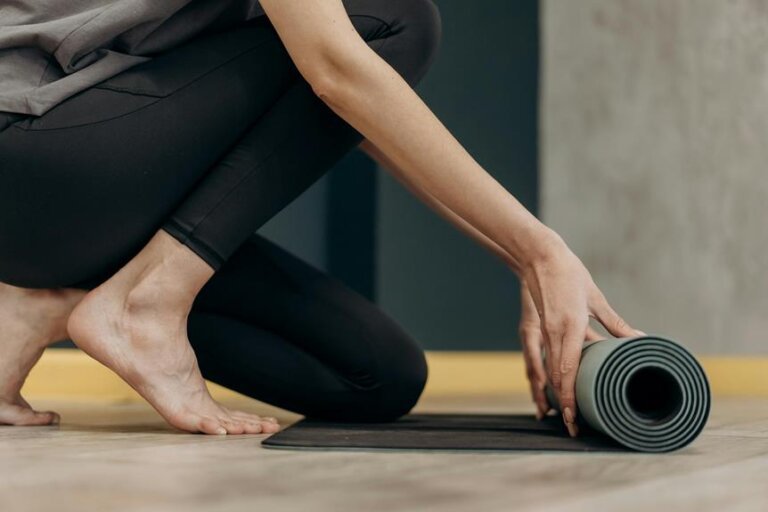Ultimate Guide to Strength Training for Beginners
Have you ever wondered if strength training is truly beneficial for beginners looking to improve their fitness levels?
Understanding the fundamentals of strength training can be a game-changer in your fitness journey. From the essential equipment you need to the proper form and technique tips, this ultimate guide will lay the groundwork for your success.
But it's not just about the basics; it's about how you can progress and track your results effectively to achieve your fitness goals.
Let's explore how you can kickstart your strength training journey with confidence and knowledge.
Benefits of Strength Training
Strength training offers numerous benefits that can improve your overall health and fitness levels. By incorporating strength training into your routine, you can increase your muscle mass, which in turn boosts your metabolism and helps with weight management. Additionally, strength training enhances your bone density, reducing the risk of osteoporosis as you age.
Engaging in strength training also has a positive impact on your mental well-being. The release of endorphins during exercise can help alleviate stress and anxiety, leaving you feeling more relaxed and mentally sharp. Moreover, as you progress in your strength training journey, you'll experience an increase in your overall strength and endurance, making daily tasks easier to perform.
Furthermore, strength training plays a crucial role in injury prevention by strengthening the muscles around your joints, improving your balance and coordination. As you build a stronger foundation, you'll be less prone to injuries during physical activities or even in your everyday movements.
Essential Equipment for Beginners
To get started with strength training as a beginner, it's important to have the essential equipment that will support your workouts effectively. One key item is a set of dumbbells or kettlebells, which can be used for a wide range of exercises targeting different muscle groups. Make sure to choose weights that challenge you without compromising form.
Resistance bands are another versatile tool that can add intensity to your workouts and help with stretching exercises. A stability ball is beneficial for core workouts and improving balance. Additionally, a yoga mat provides cushioning for floor exercises and yoga poses.
If you prefer bodyweight exercises, a pull-up bar that fits securely in a doorway can be a great addition to your home gym. Remember to invest in proper workout attire and supportive footwear to enhance your comfort and performance during strength training sessions.
Proper Form and Technique Tips
For effective strength training, ensuring proper form and technique is crucial to prevent injury and maximize results. When lifting weights, focus on maintaining a neutral spine to protect your back. Keep your core engaged throughout the movement to stabilize your body and prevent strain on your lower back. Remember to breathe continuously and avoid holding your breath, as this can increase blood pressure and reduce oxygen flow to your muscles.
When performing exercises like squats and lunges, ensure your knees stay in line with your toes to prevent unnecessary strain. Keep your weight distributed evenly through your feet and heels to maintain balance and stability. For upper body exercises, such as bicep curls and shoulder presses, concentrate on keeping your shoulders relaxed and down to avoid tension in your neck and upper back.
Always start with lighter weights to focus on your form before progressing to heavier loads. If you're unsure about your technique, consider working with a certified personal trainer to receive guidance and feedback. By mastering proper form and technique, you'll not only reduce your risk of injury but also improve the effectiveness of your strength training routine.
Designing Your Beginner Workout Plan
When structuring your beginner workout plan, prioritize exercises that align with your fitness goals and cater to your current level of strength and endurance. Start with compound movements like squats, deadlifts, and push-ups to target multiple muscle groups simultaneously. These exercises build a strong foundation and improve overall strength. Incorporate cardio activities such as brisk walking, cycling, or jumping rope to boost endurance and burn calories. Aim for a balanced routine that includes both strength training and cardiovascular exercises.
Plan your workouts based on your schedule and availability. Consistency is key, so set realistic goals and create a manageable routine that you can stick to. Start with 2-3 days of strength training per week, allowing for rest days in between to aid in muscle recovery. Gradually increase the intensity and duration of your workouts as you progress. Listen to your body, adjust the plan as needed, and stay motivated by tracking your progress and celebrating your achievements. Remember, the goal is to build a sustainable workout plan that supports your fitness journey.
Progression and Tracking Your Results
As you advance in your fitness journey, monitoring your progress and tracking your results becomes crucial for continual improvement. By keeping track of your workouts, you can ensure that you're consistently challenging yourself and making gains in strength. One effective way to monitor progress is by keeping a workout journal where you record the exercises, sets, reps, and weights used for each session. This allows you to look back and see how far you've come, as well as make informed decisions about increasing intensity.
In addition to tracking your workouts, it's essential to regularly assess your strength gains by performing strength tests. These tests can include exercises like squats, deadlifts, or bench presses to see how much weight you can lift for a certain number of reps. By doing these tests every few weeks, you can gauge your progress and adjust your training program accordingly.
Frequently Asked Questions
Are There Any Specific Dietary Recommendations or Supplements That Can Enhance the Results of Strength Training for Beginners?
To enhance your strength training results, focus on a balanced diet with lean proteins, complex carbs, and healthy fats. Drink plenty of water and consider supplements like protein powder or creatine, but consult a professional for personalized recommendations.
How Can Beginners Prevent Injuries While Strength Training and What Are the Most Common Mistakes to Avoid?
To prevent injuries while strength training, focus on proper form, warm up before exercising, and listen to your body's limits. Avoid lifting too heavy, rushing through reps, and neglecting rest days. Stay mindful and consistent for safe progress.
Can Strength Training Help With Weight Loss and How Often Should Beginners Incorporate Cardio Into Their Workout Routine?
Strength training can aid weight loss by boosting metabolism and preserving muscle mass. For beginners, aim for at least 150 minutes of moderate cardio weekly. Incorporate it alongside strength training to enhance overall fitness and results.
Is It Necessary to Work With a Personal Trainer or Can Beginners Effectively Learn Proper Form and Techniques on Their Own?
You can effectively learn proper form and techniques on your own as a beginner. However, working with a personal trainer can provide valuable guidance and feedback, especially when starting out to ensure safety and optimal progress in strength training.
How Important Is Rest and Recovery in a Beginner Strength Training Program and What Are Some Tips for Optimizing Recovery Between Workouts?
Rest and recovery are crucial in a beginner strength training program. To optimize recovery, prioritize sleep, hydrate well, eat nutritious meals, and listen to your body. Incorporating stretching, foam rolling, and active recovery activities can also help speed up muscle repair.
Conclusion
Congrats on taking the first step in your strength training journey!
Remember to start slow, focus on proper form, and gradually increase weight and intensity.
Don't forget to track your progress to see how far you've come.
With dedication and consistency, you'll be on your way to building strength, improving your overall fitness, and reaching your goals in no time.
Keep pushing yourself and enjoy the journey!






